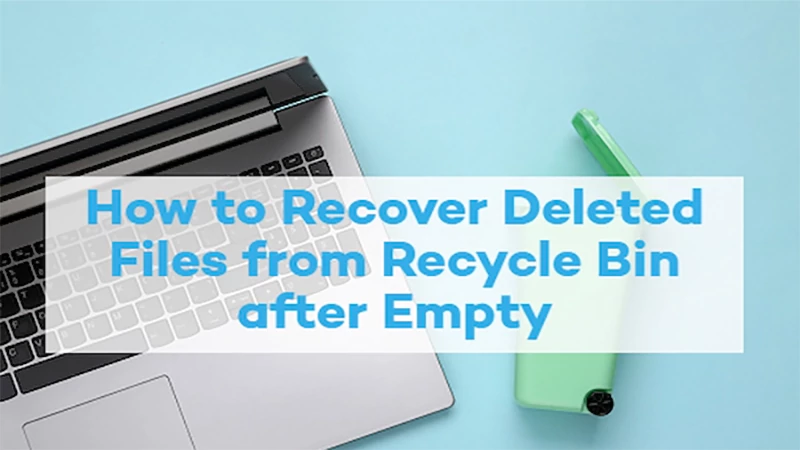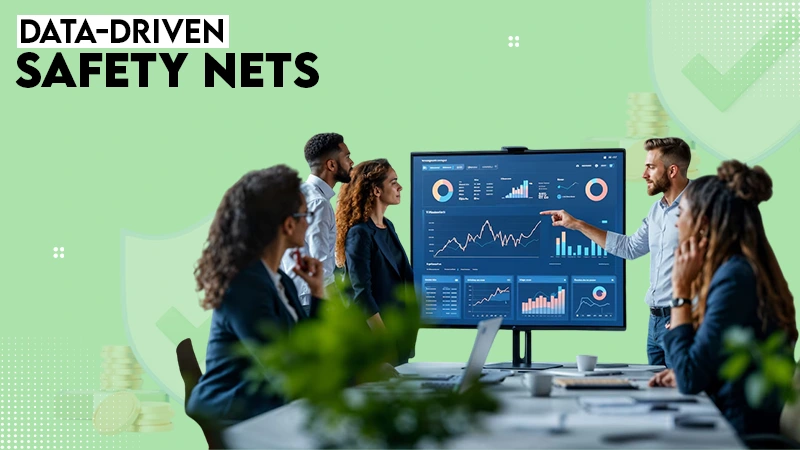Yes, you can ask the AI to refresh, add and remove variables anytime.
How Websets Support Digital Marketing Campaigns
In this digital world, just getting data is not enough for marketers – they need data that works fast, stays accurate and actually moves their campaign forward. But the reality is very chaotic and messy.
Getting data from various sources, sorting it and turning it into something useful often takes more time than running the campaign itself. And in case the teams use costly tools, the prices can shoot up quickly.
This is where WebSets come in. Think of them as processing machines that can gather, organize and analyze the information that you actually ask for.
No spreadsheets, no chaos. Just a clean, structured marketing strategy.
Keep reading to know more about Websets and how they support digital marketing campaigns.
What are Websets?
Websets are AI-compiled datasets tailored to a specific objective. Rather than collecting, cleaning, and analyzing data manually, you prompt a specialized AI model to handle the whole process.
The specialized model (like DeepLookup) is fitted with web scraping and data analytics tools, allowing it to extract data from specific web pages and compile it to form a dataset — what’s referred to as a Webset.
Even after the model obtains and structures the data, you can request it to delete some variables or add more fields. The model can also include citations if you want to trace the data back to the source.
Generally, the AI model does most of the analytics in the background to obtain relevant data. Nonetheless, since the AI structures data with little to no human intervention, you can add the dataset into BI tools or analytics workflows effortlessly.
Discover how marketing teams are tapping into websets to level up their campaigns!
CASE STUDY
A SaaS Startup replaced slow manual data research with websets and instantly improved campaign accuracy. By generating real-time datasets for competitors, keywords and audience interests, the startup cut planning time by 60% and boosted organic traffic by 35% in just a month.
This case study shows how websets can enhance marketing decisions in almost no time.
How Websets Support Digital Marketing Campaigns
As highlighted, websets are as a result of you describing what data you want in natural language and letting AI handle the rest.
An AI model crawls the web and ‘reasons’ to select relevant data points. It then formats the data into structured datasets. These datasets support digital marketing in the following ways. They…
1. Power smarter content creation
Most marketing teams have a pretty hard time deciding what content to post. Why?
Traditional marketing tools offer basic statistics around keyword performance, trending topics, and audience engagement. They lack the ‘reasoning’ part. The marketing team handles this part and decides on what content to create based on analytics assumptions.
Some teams even abandon the analytics part and imitate competitors.
Here’s where Websets come in! Websets give you direct access to structured, real-time intelligence about what’s happening across the web. You don’t have to find your target audience that is paying attention to.
While deciding to create social posts, blogs, videos, or ads, you describe a target audience and ask a Webset-building AI to create a dataset describing the most used content type and what’s being discussed. This boosts confidence and saves time when creating a content campaign.
2. Strengthen lead generation and prospecting
Websets have simplified B2B lead research and prospecting. While traditional lead generating tools offer marketers surface-level data like company names, email addresses, or company size, Websets are created through real-time analytics.
For instance, you can generate a lead Webset based on factors like hiring trends, technology stack, certain market activities, or growth signals. This level of processing allows you to get highly personalized outreach campaigns.
Since Websets include citations, rechecking the details such as company name, email address, and phone numbers is easy. This lowers the chances of the sales team relying on wrong information.
Not forgetting, lead Websets are flexible. Before re-using a lead list, the marketing team can prompt the AI to update the data, reducing bounce rate and saving hours of manual updating.
3. Help you build targeted ad campaigns
Popular Ad networks like Meta or Google Ads do provide the data and analytics tools to help with Ad targeting. Nonetheless, the data may be scattered, outdated, or too generic. In such a scenario, marketing teams turn to Websets.
Webset-generating AI models are capable of pulling and analyzing intelligence from multiple sources to pinpoint the profiles of decision-makers. This is especially useful when running B2B ad campaigns.
Other than pinpointing the profiles, the AI can pull data around what the decision-makers do and what they are currently interested in, enhancing targeting.
Websets can also reveal merging trends, giving you the chance to create ads that match current demand. This is possible if the Webset-building AI can track real-time market behavior and patterns.
4. Provide fresh keyword opportunities to boost search visibility
Traditional SEO (Search Engine Optimization) tools lag behind real-world trends. Even though some tools like Google Trends try to keep up, they are still too vague.
Keyword Websets are built based on what people are searching right now. As audience interests evolve, competitors introduce new products, new terms emerge, or industries shift, Webset-creating AI models can be instructed to keep an eye on what’s going on. This way, you can spot keyword opportunities early or while running an SEO campaign.
You can also uncover content gaps while analyzing keyword websets. This occurs when you realize that your audience has more interest in certain keywords but the topic is poorly covered. So, you take the opportunity to publish SEO content that meets the audience’s needs.
Webset-building AI models are also better at discovering long-tail keywords with low competition and higher conversion potential. They do this by analyzing data related to product comparisons, user questions, or specific pain points.
5. Reveal what competitors are up to
With Websets, marketers are not limited to occasional manual competitor analysis. They also don’t have to rely on outdated competitor reports or scattered research for decision-making.
You can get a competitor analysis Webset that continuously collects, structures, and updates data from specific web pages. Analysing the data reveals signals such as competitor marketing campaigns, customer reviews, pricing updates, or even new product launches.
For instance, if a competitor redesigns their website, updates their messaging, or shifts focus to a different audience segment, Websets can capture this data, helping you adjust your campaigns accordingly.
Instead of waiting for a competitor to make a move for you to realize, you can use Webset-building AI models equipped with predictive analytics features. The models monitor competitor messaging, major updates, promotions, content releases, advertising pushes and other data elements to ‘tell’ the competitor’s next move.
Closing Words
No more need to use a variety of tools to perform simple tasks – AI has made it possible to have data-generating solutions that ‘reason’ while collecting, cleaning, and analyzing the data.
Through text-based instructions, you can have a specialized AI model crawl the web, extract specific data, and build a well-structured dataset. This dataset is known as a Webset.
These websets are not just data sources, they are decision accelerators. Still, this is a technology – Test the effectiveness and confirm the reliability of a Webset-building AI model before committing long-term.
Frequently Asked Questions
Can websets be updated?
Are these websets relisable?
Yes, most of the time they are, but it is important to always check once before trusting blindly.
How do websets help marketers?
They provide clean and structured data that can be used directly for content planning, SEO and more.
What makes them better and faster than traditional tools?
Their flexibility to gather and provide a variety of clean and fresh data.
Running an organization is a highly complex job. You have to deal with taxes, guidelines, and many more operational tasks…
In today’s connected world, knowing how to text someone anonymously is a valuable skill for protecting your privacy. Whether you…
Is your Android phone starting to act strangely? This usually happens after a change in settings, a new update, or…
Ever wondered why it’s called the Recycle Bin? It is because your deleted files are not gone for good, at…
Icons are much more than simple visual adornments. They are the interface contracts for all outcomes, status signals, and the…
From internal financials and health records to payment tokens and customer identifiers, sensitive data is ingrained in day-to-day operations. According…
When your rent, gas, groceries, and internet bills all keep going up at the same time, have you ever wondered…
If you are a marketing professional, you have probably noticed that the amount of content your department produces has increased…
In our quick-moving online era, videos plus songs pop up all over – like on YouTube or Instagram, even Facebook…






